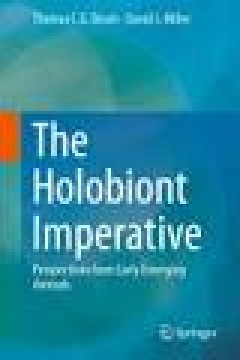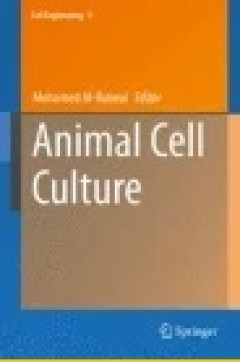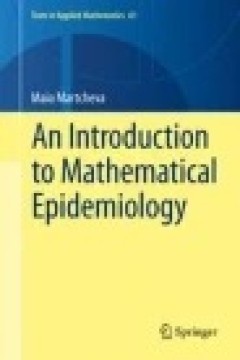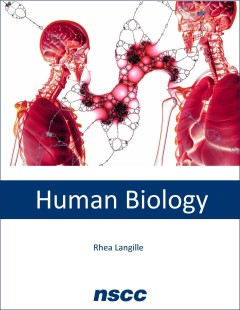Filter by

The Holobiont Imperative
This book examines how the growing knowledge of the huge range of animal-bacterial interactions, whether in shared ecosystems or intimate symbioses, is fundamentally altering our understanding of animal biology. Individuals from simple invertebrates to human are not solitary, homogenous entities but consist of complex communities of many species that likely evolved during a billion years of coe…
- Edition
- 1
- ISBN/ISSN
- 978-3-7091-1896-2
- Collation
- X, 155,51 b/w illustrations, 6 illustrations in colour
- Series Title
- The Holobiont Imperative
- Call Number
- -

Antibacterial Surfaces
Antibacterial Surfaces’ covers the advances being made in the design of antibacterial surfaces, which have the ability to either prevent the initial attachment of bacterial cells, or kill any cells that come into contact with these surfaces. This book discusses the mechanisms associated with the attachment of bacteria to surfaces and the main strategies currently being employed to control …
- Edition
- Ed. 1
- ISBN/ISSN
- 978-3-319-18594-1
- Collation
- V, 172
- Series Title
- -
- Call Number
- 574.87 ANT a

Aniridia: Recent Developments in Scientific and Clinical Research
The aim of this book is to highlight the latest findings in Aniridia research. Aniridia, meaning “without iris”, is a rare genetic disorder affecting vision, characterized by the incomplete formation of the iris (the coloured part of the eye that surrounds the black pupil). It may also cause other segments of the eye to be under-developed such as the optic nerve and the macula (the central …
- Edition
- Ed. 1
- ISBN/ISSN
- 978-3-319-19779-1
- Collation
- VIII, 192
- Series Title
- -
- Call Number
- 574.87 ANI a

Animal Cell Culture
Animal cells are the preferred “cell factories” for the production of complex molecules and antibodies for use as prophylactics, therapeutics or diagnostics. Animal cells are required for the correct post-translational processing (including glycosylation) of biopharmaceutical protein products. They are used for the production of viral vectors for gene therapy. Major targets for this therapy…
- Edition
- Ed. 1
- ISBN/ISSN
- 978-3-319-10320-4
- Collation
- XII, 763
- Series Title
- Cell Engineering
- Call Number
- 574.87 ANI a

Analysis of Single-Cell Data: ODE Constrained Mixture Modeling and Approximat…
Carolin Loos introduces two novel approaches for the analysis of single-cell data. Both approaches can be used to study cellular heterogeneity and therefore advance a holistic understanding of biological processes. The first method, ODE constrained mixture modeling, enables the identification of subpopulation structures and sources of variability in single-cell snapshot data. The second method …
- Edition
- Ed. 1
- ISBN/ISSN
- 978-3-658-13234-7
- Collation
- XXI, 92
- Series Title
- BestMasters
- Call Number
- 515.6 LOO a

Building Resilience of Human-Natural Systems of Pastoralism in the Developing…
This edited volume summarizes information about the situational context, threats, problems, challenges and solutions for sustainable pastoralism at a global scale. The book has four goals. The first goal is to summarize the information about the history, distribution and patterns of pastoralism and to identify the importance of pastoralism from social, economic and environmental perspectives. T…
- Edition
- -
- ISBN/ISSN
- -
- Collation
- -
- Series Title
- -
- Call Number
- 570

An Introduction to Neural Information Processing
This book provides an overview of neural information processing research, which is one of the most important branches of neuroscience today. Neural information processing is an interdisciplinary subject, and the merging interaction between neuroscience and mathematics, physics, as well as information science plays a key role in the development of this field. This book begins with the anatomy of…
- Edition
- Ed. 1
- ISBN/ISSN
- 978-94-017-7393-5
- Collation
- XI, 328
- Series Title
- -
- Call Number
- 616.80076 LIA i

An Introduction to Mathematical Epidemiology
The book is a comprehensive, self-contained introduction to the mathematical modeling and analysis of infectious diseases. It includes model building, fitting to data, local and global analysis techniques. Various types of deterministic dynamical models are considered: ordinary differential equation models, delay-differential equation models, difference equation models, age-structured PDE model…
- Edition
- Ed. 1
- ISBN/ISSN
- 978-1-4899-7612-3
- Collation
- XIV, 453
- Series Title
- Texts in Applied Mathematics
- Call Number
- 576 MAR i

Conservation Biology in Sub-Saharan Africa
Overview: Conservation Biology in Sub-Saharan Africa comprehensively explores the challenges and potential solutions to key conservation issues in Sub-Saharan Africa. Easy to read, this lucid and accessible textbook includes fifteen chapters that cover a full range of conservation topics, including threats to biodiversity, environmental laws, and protected areas management, as well as relate…
- Edition
- -
- ISBN/ISSN
- -
- Collation
- -
- Series Title
- -
- Call Number
- 570 WIL c

NSCC Human Biology
In this survey text, directed at those not majoring in biology, we dispel the assumption that a little learning is a dangerous thing. We hope that by skimming the surface of a very deep subject, biology, we may inspire you to drink more deeply and make more informed choices relating to your health, the environment, politics, and the greatest subject that are all of us are entwined in, life itself.
- Edition
- -
- ISBN/ISSN
- -
- Collation
- -
- Series Title
- -
- Call Number
- 570 LAN n
 Computer Science, Information & General Works
Computer Science, Information & General Works  Philosophy & Psychology
Philosophy & Psychology  Religion
Religion  Social Sciences
Social Sciences  Language
Language  Pure Science
Pure Science  Applied Sciences
Applied Sciences  Art & Recreation
Art & Recreation  Literature
Literature  History & Geography
History & Geography